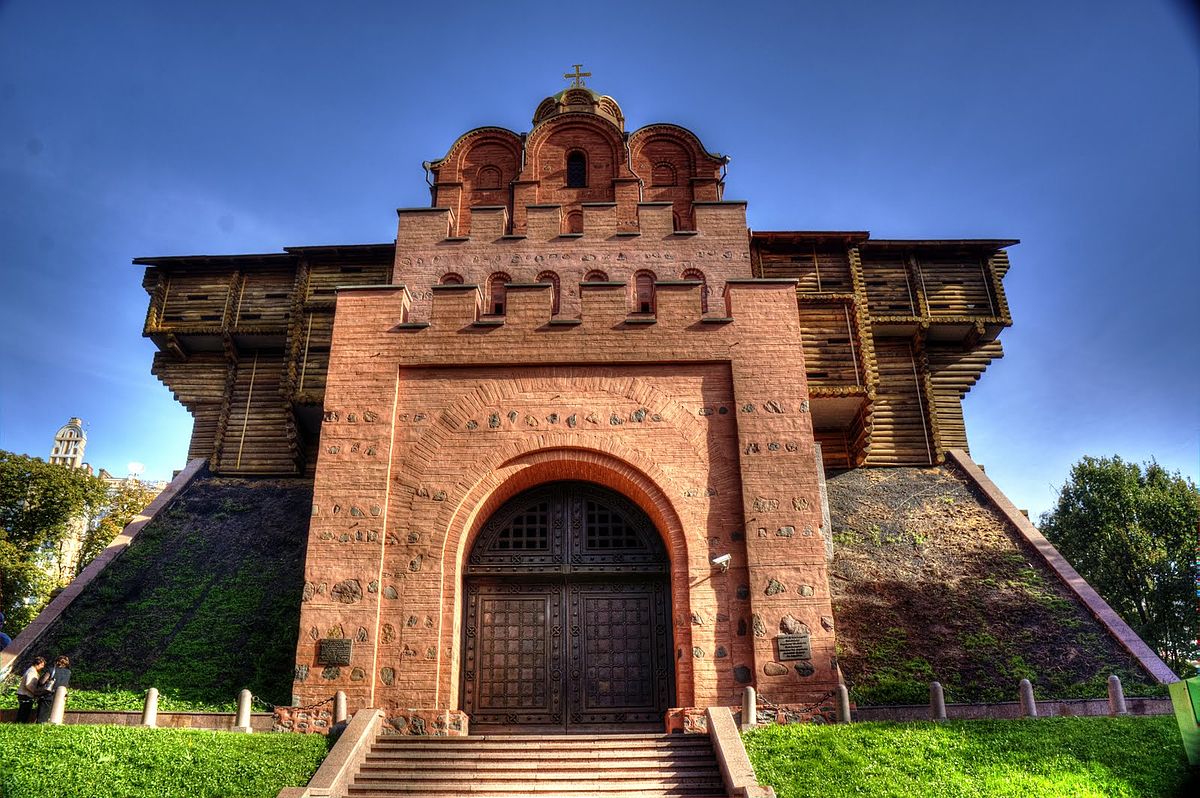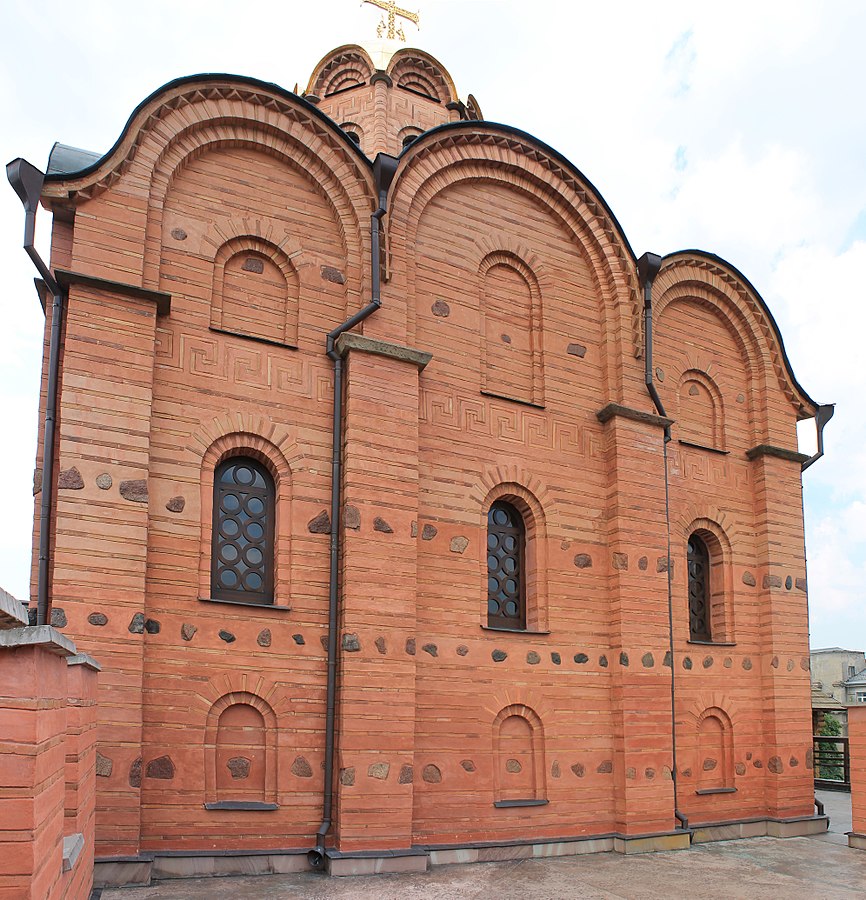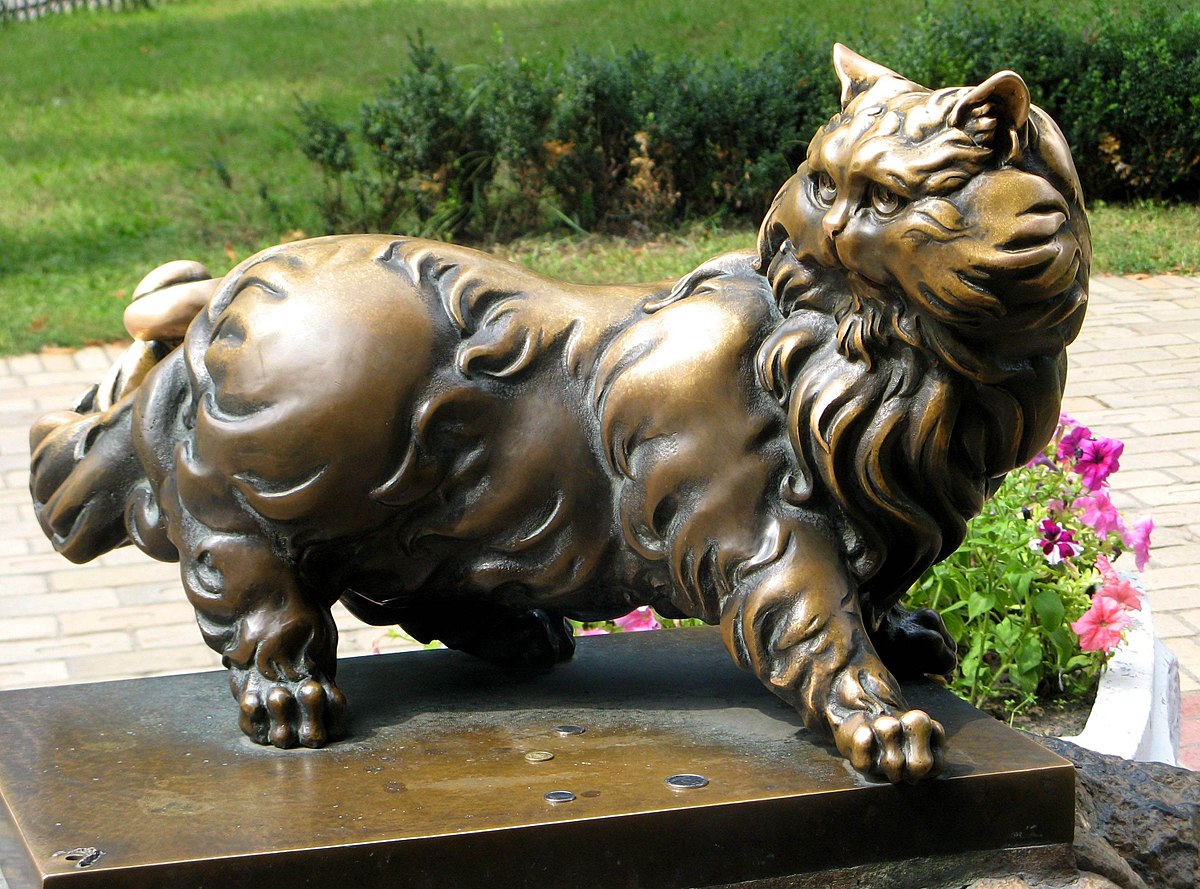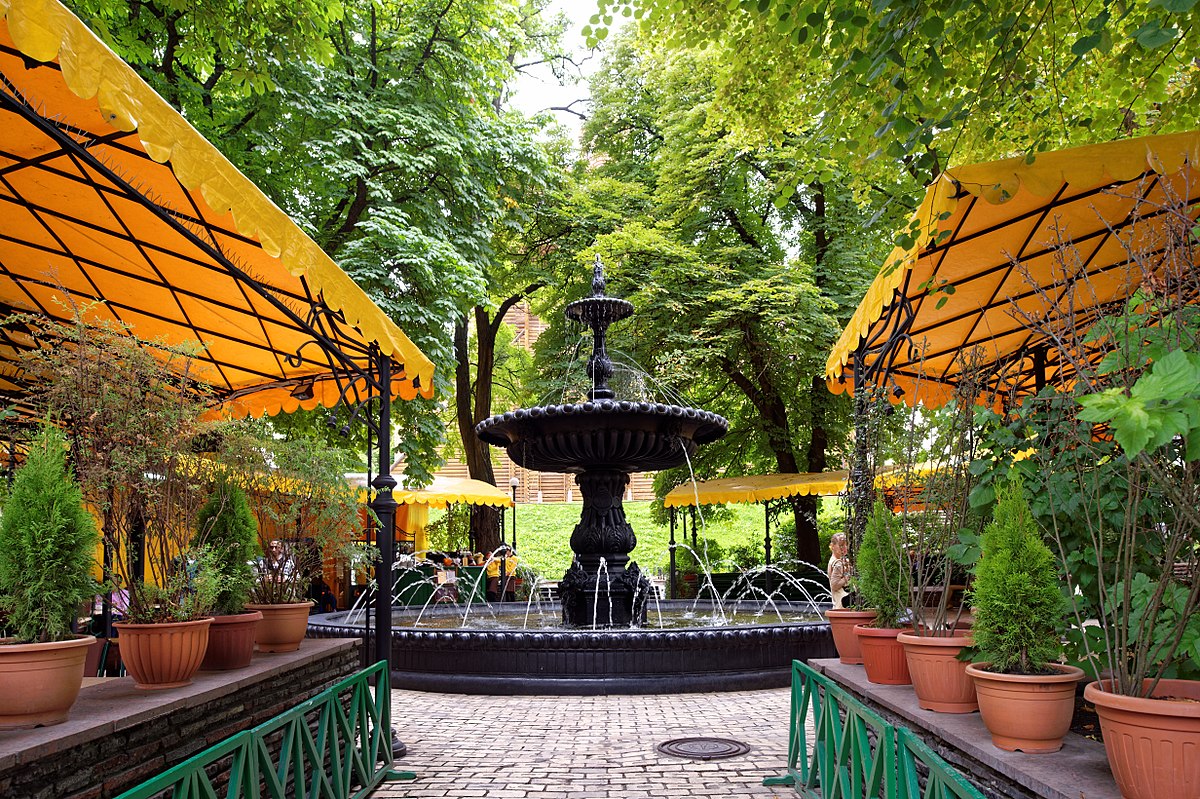Golden Gate
During the reign of Prince Yaroslav the Wise, the territory of Kyiv was constantly expanding, which required the construction of new defensive fortifications – powerful ramparts with reinforced wooden cages and deep ditches were erected. The city was surrounded by earthen ramparts with a total length of 4 kilometers, they ran along the current streets of the center – from Lviv Square along Yaroslav Val Street to the Golden Gate, went down to Independence Square (where the Lyadskie Gate stood) and again went up to Mikhailovskaya Square. Archival documents and chronicles contain inaccurate information that Yaroslav the Wise surrounded the city with a moat and ramparts with three gates, the strongest of which turned out to be the Golden Gate, which was the central entrance to Kiev.
The Golden Gate is a fortress tower with a wide passage (up to 8 meters). Powerful pylons protrude into the passage, on which the arches of the vault rested. The height of the surviving walls reaches 10 meters. The gate was made of stone, due to the fact that this structure was given special significance. They were built using the mixed masonry technique, known since the times of Ancient Rome: layers of stones were interspersed with leveling rows of plinths (thin bricks). The decorative features of the masonry are clearly visible on the front surface of the walls.
The Gate was crowned by the Gate Church of the Annunciation, so that every traveler approaching Kyiv could see that this is a Christian city. During the restoration work, the gate church was recreated as a four-pillar, single-domed church with apses recessed into the thickness of the wall, which do not protrude from the overall volume of the facade. Brick ornaments, characteristic of the art of that period, were used as architectural decoration. During the archaeological research of the Golden Gate, smalt cubes and fragments of fresco plaster were discovered, which indicates that the ancient church was decorated with fresco paintings and mosaics.
The gate was intended for the ceremonial entry into Kyiv and was located in the southern part of the city. On the field side in front of the gate there was a ditch 15 meters wide and 8 meters deep. Traces of this ditch are still visible in the level difference of Zolotovorotsky Passage.
The construction of the gate together with the St. Sophia Cathedral is mentioned in the chronicles and dates back to 1037. In 1240, the gate was badly damaged during the siege and capture of the city by the horde of Batu Khan. From the records of travelers of the 16th and 17th centuries it is known that by this time the Golden Gate was dilapidated.
Golden Gate Museum
The Golden Gate remained the gateway to the city until the 18th century, although over time it increasingly fell into ruins. In 1832, the first measures were taken to preserve them – the walls and vaults were strengthened, but after that, for a century and a half, the gates were left to their own devices. Only in the 1970s, a pavilion was built near the already ruins, which housed a small museum dedicated to the history of the Golden Gate, and subsequently the museum was moved to the building of the Golden Gate itself, which was reconstructed based on surviving sketches, where it remains to this day.
In 1982, for the celebration of the 1500th anniversary of Kiev, the Golden Gate was completely reconstructed, despite the fact that there were no 100% reliable images or diagrams of what it looked like originally. The Golden Gate was reproduced in its supposed original form. The work was carried out in a hurry, and the design itself had a number of shortcomings. Poor quality concrete and wooden fortifications began to quickly collapse, and the building quickly lost its original appearance…
In 2007, another reconstruction was carried out, during which conservation and restoration of the parts of the gate that had survived from the time of Yaroslav the Wise were carried out, updating the appearance and replacing the wooden cladding. In the spacious interiors of the restored landmark, the visitor can familiarize himself with the museum’s exhibition telling about the history and architecture of the Golden Gate, see the ancient walls of the 11th century passage and climb the stairs to the Church of the Annunciation (Gate Church).
Square at the Golden Gate (Zolotovorotsky Square)
To improve such a valuable historical monument as the Golden Gate, a park was laid out near it in the 19th century: trees were planted, benches and trash cans were installed. In 1899, a grandiose event took place here – a cast-iron fountain was installed, the shape of which resembled a fruit bowl. This was one of 6 fountains that were planned to be installed throughout Kyiv and which has survived to this day.
There are 3 objects in the park near the Golden Gate:
– monument to the cat Panteleimon,
– monument to Yaroslav the Wise,
– cast iron fountain (the other 5 similar fountains were installed on Ivan Franko Square, on Oles Gonchar Street, at Nicholas Church and on Vladimirskaya street).
Where is the Golden Gate?
Vladimirskaya street, 40A





